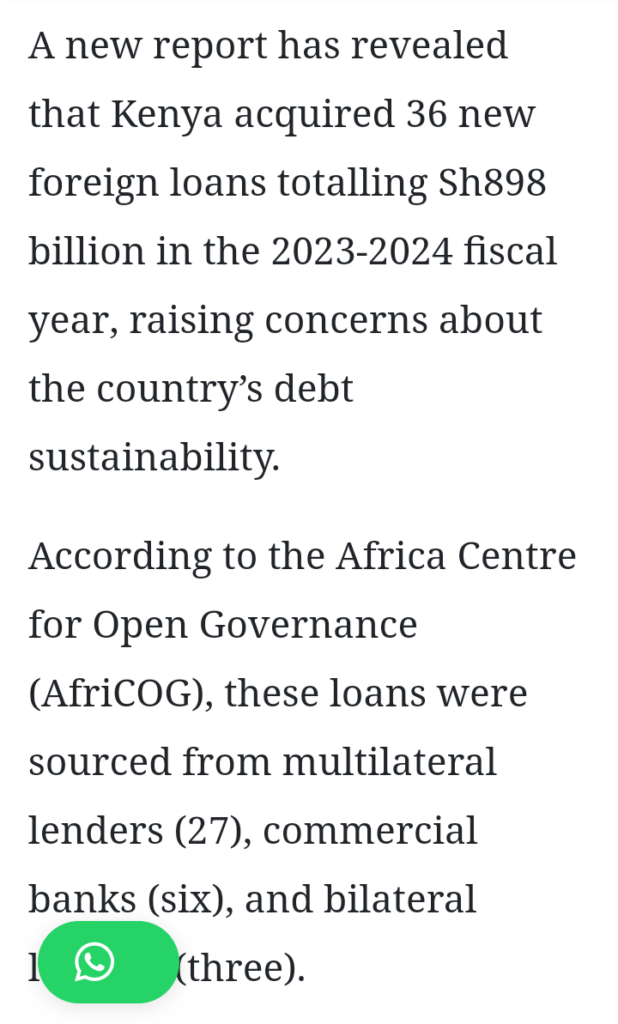A recent report reveals Kenya secured 36 new foreign loans worth Sh898 billion during the 2023-2024 fiscal year, sparking concerns over growing debt.The loans were sourced from 27 multilateral lenders, six commercial banks, and three bilateral creditors.
Debt repayment poses a major challenge, with Sh330 billion due in 2024 and over Sh1.5 trillion to be repaid by 2027.
Principal repayments exceeded Sh500 billion last year alone, underscoring the strain on Kenya’s economy.
The report criticizes the lack of transparency in debt management, noting both the public and Parliament are excluded from consultations.
It states there is no effort to inform citizens about the rationale behind these debts, and even lawmakers are often left out of key discussions.
By September 2024, Kenya’s public debt had reached Sh10.8 trillion, according to the Central Bank of Kenya.

AfriCOG echoed the World Bank’s call for greater debt transparency, urging annual disclosures of all external debts and transactions.
Data from the International Debt Report showed Kenya’s external debt at Sh5.55 trillion in December 2023, representing 35% of its Sh14.6 trillion GDP.
Multilateral creditors held 55% of the external debt, with the World Bank accounting for 30% and the African Development Bank 10%. Bilateral creditors held 23%, led by China at 16%, Japan at 3%, and France at 2%.
Private creditors made up 22%, mainly bondholders (18%) and commercial lenders (3%).
While Kenya borrowed less from private creditors in 2023 than in previous years, interest rates surged from 6% in 2022 to 10% in 2023, with loan maturities shrinking from 11 years to just five years.
Loans from official creditors, however, offered better terms, averaging 18 years with a 4% interest rate.
The country’s financial troubles were compounded by the rejection of the Finance Bill, 2024, which sought to introduce new taxes for debt servicing.
Despite austerity measures, fiscal challenges persist.
The World Bank highlighted that developing nations faced record debt servicing costs in 2023, totaling $1.4 trillion.
This included $951 billion in principal repayments and $406 billion in interest, a 33% increase from the previous year.
Debt burdens have diverted resources from crucial sectors like health and education.
The global lender urged developing countries to prioritize borrowing from official creditors, which provide more favorable terms compared to private lenders.


